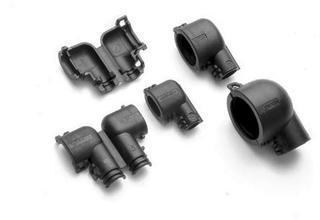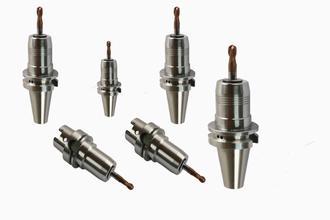Last year, steel prices dropped by 30%, and in 2016, steel prices are likely to remain low
Release time:
2020-01-16
Plastic Hardware Network News: In 2015, China's steel exports increased significantly to 112.4 million tons, setting a new historical record. However, steel prices have not risen synchronously, and domestic steel prices have generally decreased by 30%, with a deeper decline compared to the previous year.
According to institutional statistics, the domestic steel trading volume shrank by 10.5% year-on-year to 389.1 billion yuan last year. From the perspective of price decline, except for the basic stability of wire drawing materials, the price decline of other products has significantly expanded compared to the previous year. The product with the largest decline in 2014 was wire drawing, with a price drop of 25.55%. The product with the smallest decline last year was composite steel, which fell by 23.36%, and cold-rolled coil, which fell by 42.26%. In addition, the annual decline of galvanized sheet and hot-rolled coil also exceeded 40%.
The price drop of sheet metal in steel varieties is much greater than that of other products, and special steel products have more obvious resistance to decline. In 2015, the price decline of ordinary steel products was seven percentage points higher than that of special steel varieties, while in the past two years, the price decline of special steel products has been eight percentage points lower.

The latest prices of most of the steel products mentioned above are the lowest prices of the year, while the highest prices are at the beginning of the year, reflecting a clear characteristic of the price changes in the entire steel industry in 2015, which is the continuous decline in prices without a significant price rebound during this period.
Under the price drop, the steel industry has suffered widespread losses. According to data from the China Iron and Steel Industry Association (referred to as CISA), from January to November 2015, key steel companies suffered a loss of 53.132 billion yuan. Between October and November alone, the loss doubled, while the same period last year saw a profit of 24.387 billion yuan; The profit margin of sales revenue is -2%, compared to 0.74% in the same period last year; 51 companies suffered losses, an increase of 27 compared to the same period last year.
On January 11th, Zhang Guangning, the President of the China Iron and Steel Association, stated at the 2016 Council (Expanded) Meeting that there are multiple reasons for the difficulties faced by the steel industry. The most prominent reason, which cannot be solved solely by enterprises themselves, is mainly due to four aspects: firstly, the decline in market demand and the prominent contradiction of overcapacity; Secondly, structural contradictions are more prominent; Thirdly, the mechanism for enterprise exit has not yet been established; The unfair market environment has exacerbated vicious competition.
Despite the first decline in crude steel production in 20 years and a slight reduction in supply, the reduction in production is less than expected, and overcapacity remains severe. At present, China's steel production capacity has reached 1.1-1.2 billion tons, while the total domestic steel demand remains at 600-70 billion tons, which is only nearly half of the supply.
According to institutional statistics, the average monthly inventory of steel mills in 2015 was 15.73 million tons, while in 2014 it was only 13.84 million tons, with an increase of about 13.64%.
In contrast, the social inventory of steel is continuously decreasing. As of the end of 2015, the total social inventory of the five major steel varieties in China was 8.797 million tons, a decrease of 8.02% compared to the same period last year.
According to analysis by relevant institutions, the trading community is the reservoir of the steel market. However, in recent years, due to the significant decline in trade profits and the continuous decline in steel prices, the willingness of traders to stockpile has decreased significantly, leading to a decrease in steel social inventory since 2013, and the total amount of steel social inventory has continued to decline.
Relevant institutions have found through previous data research that there is no fixed relationship between the decline in steel prices and production capacity, and there are also many situations where it is unrelated or even deviated from the cost of iron ore. Therefore, the main factor leading to the decline in steel prices is the change in supply relationship caused by the decrease in total demand.
Since 2011, the growth rate of downstream development in the steel industry, represented by real estate, has significantly slowed down in China. The infrastructure market, represented by real estate, accounts for over 55% of steel demand, and the slowdown in real estate demand has the most significant impact on steel prices. In addition, the development of industries such as automobiles and home appliances is closely related to the real estate market.
Since the end of last year, there has been an improvement in demand in some downstream steel industries. With the rapid growth of fiscal expenditure, large-scale replacement of local debt, and support from special financial bonds, the growth rate of infrastructure investment rebounded to 18.2% from January to November 2015. Under the stimulus of the halved purchase tax for small displacement cars, the national car market showed a significant recovery in November, with both production and sales exceeding 2.5 million vehicles.
However, the demand for steel in most downstream industries remains weak. Due to structural overcapacity in the real estate market, the growth rate of real estate investment continues to decline. At the same time, industries such as shipbuilding, home appliances, and traditional machinery have weak output growth and are still in the process of overcapacity reduction. Therefore, despite the recent rebound in the steel market, most industry insiders are not optimistic about it.
Since mid December last year, due to the expansion of maintenance and production reduction in the steel industry, there has been a shortage of hot-rolled specifications and varieties, leading to a rebound in the market. The comprehensive price of steel has increased by more than 200 yuan, but currently most steel varieties have experienced a phenomenon of rising and falling prices.
At present, it seems that the situation of steel mills resuming production due to this round of price rebound is not obvious. Analyst Wang Guoqing believes that as January approaches the Spring Festival, some downstream productive enterprises may increase their raw material reserves. However, due to the overall weakening of terminal demand, steel prices will face certain downward pressure in the short term.
However, Wang Guoqing believes that due to the rebound in steel prices in the early stage, the price in January has increased by a certain height compared to the previous period. Compared with the weak operation of raw materials in December, it is expected that the profitability of steel mills will slightly improve in January.
2016 is the beginning year of the 13th Five Year Plan, and the industry has high expectations for the intensive introduction of various industrial policies. However, based on the current sluggish economic situation, relevant institutions believe that the steel market is likely to continue to operate at a low price. It is predicted that the total downstream demand of major industries in 2016 will be about 665 million tons, a decrease of 1.1% from 2015.
Related News


 2016-01-14
2016-01-14



